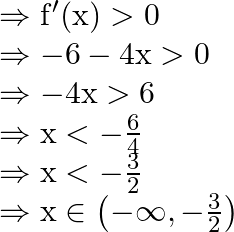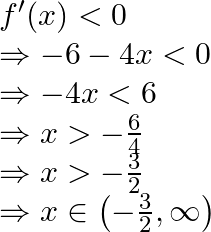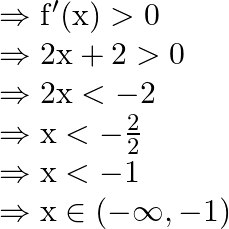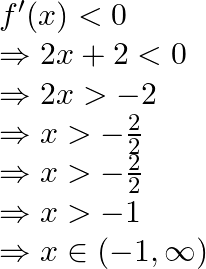Solution:
(i) Given that ![]()
On differentiating the above equation we obtain,

For ![]() to be increasing, we must have
to be increasing, we must have

Therefore ![]() is increasing on the interval
is increasing on the interval ![]()
Again, for ![]() to be increasing, we must have
to be increasing, we must have

Therefore ![]() is decreasing on interval
is decreasing on interval ![]()

So ![]() is decreasing on interval
is decreasing on interval ![]()
(ii) Given that ![]()
On differentiating the given equation we obtain,

For ![]() to be increasing, we must have
to be increasing, we must have

Therefore ![]() is increasing on interval
is increasing on interval ![]()
Again, for ![]() to be increasing, we must have
to be increasing, we must have

Therefore ![]() is decreasing on interval
is decreasing on interval ![]()
